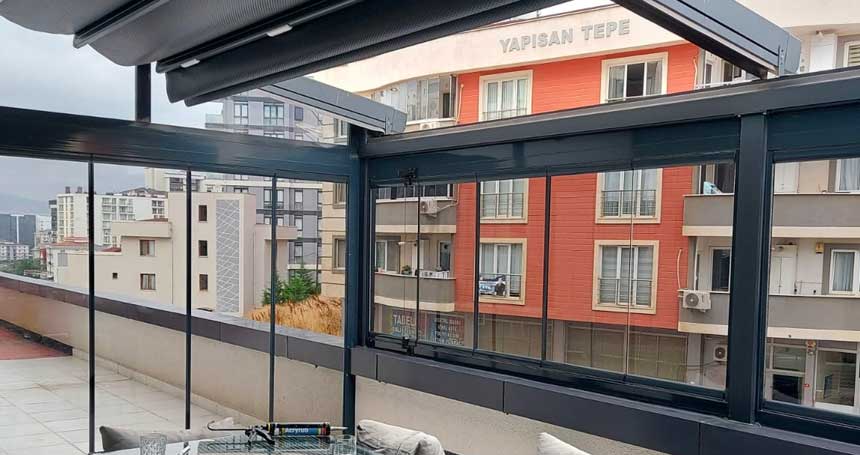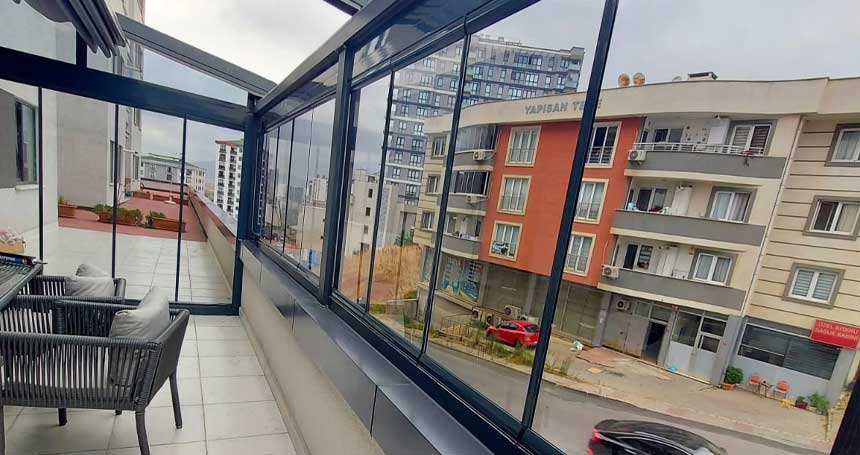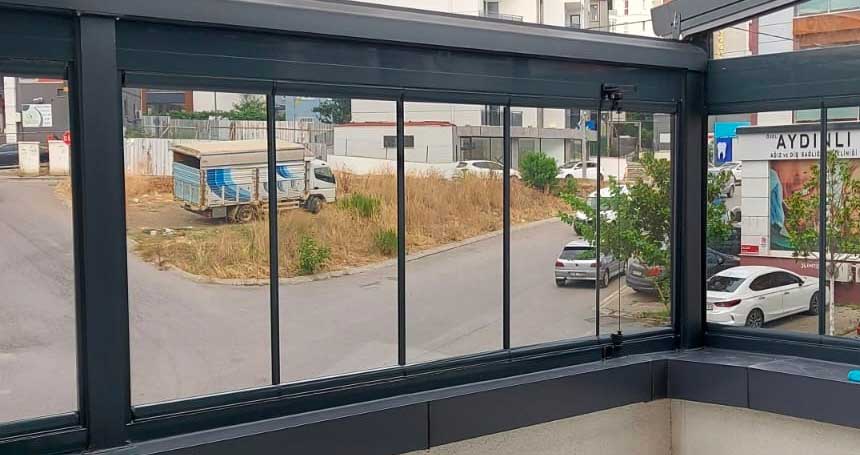A glass balcony, also known as a glass railing or glass balustrade, is a type of architectural feature commonly found in modern buildings, especially in urban areas with scenic views. It consists of transparent or translucent glass panels that serve as a protective barrier along the edges of a balcony, terrace, or mezzanine level. The use of glass in balconies offers several advantages, including:
- Aesthetic Appeal: Glass balconies provide an unobstructed view of the surrounding environment, enhancing the visual appeal of the space and creating a sense of openness.
- Safety: While glass may appear fragile, it’s usually made from tempered or laminated glass that is designed to be strong and impact-resistant. This ensures the safety of individuals using the balcony.
- Light and Space: Glass railings allow natural light to penetrate into the living space, making interiors brighter and more inviting. They also contribute to a sense of spaciousness by reducing the visual barriers between indoor and outdoor areas.
- Architectural Integration: Glass balconies can be seamlessly integrated into modern architectural designs, creating a sleek and contemporary look that complements the overall aesthetics of the building.
- Weather Protection: Glass panels can provide a degree of protection from wind, rain, and other weather elements, allowing occupants to enjoy the balcony space even in less-than-ideal weather conditions.
- Low Maintenance: Glass panels are relatively easy to clean and maintain, especially when treated with coatings that repel dirt and water spots.
- Customization: Glass panels can be customized in terms of thickness, tint, and other design elements, allowing architects and homeowners to tailor the appearance of the balcony to their preferences.
- Privacy: Frosted or tinted glass can be used to create a level of privacy while still maintaining the benefits of transparency.
It’s important to note that the construction and installation of glass balconies must adhere to safety standards and local building codes to ensure the well-being of occupants. Regular maintenance and inspections are also necessary to ensure the structural integrity of the glass panels and the supporting elements.
Folding Glass Balcony
A folding glass balcony, also known as a retractable glass balcony or a folding glass railing, is a specialized type of balcony feature that offers the flexibility to open or close the balcony space using a folding mechanism. This type of balcony design combines the benefits of a traditional glass balcony with the ability to adapt the space according to different weather conditions and user preferences.
Here’s how a folding glass balcony typically works:
- Panels: The balcony features multiple glass panels that are hinged together. These panels can be folded or stacked against each other when the balcony is in the open position.
- Folding Mechanism: The folding mechanism allows the panels to be easily moved along a track or hinge system. This mechanism enables the panels to be folded horizontally, creating an unobstructed opening and expanding the usable living space.
- Versatility: When the weather is pleasant, users can fold the glass panels to fully open the balcony, merging the indoor and outdoor spaces. This is especially advantageous in creating a seamless transition between the interior and the balcony, offering a larger entertaining or relaxation area.
- Protection: On days with less favorable weather conditions, such as rain or wind, the glass panels can be folded back into place, providing protection and shielding the balcony from the elements while still allowing natural light to enter.
- Aesthetic Appeal: Folding glass balconies offer a unique and modern aesthetic. They can be customized in terms of panel design, hardware, and finishes to match the overall architectural style of the building.
- Space Efficiency: Unlike traditional sliding doors or fixed glass panels, folding glass balconies do not require space for panels to slide alongside the opening. This can be particularly beneficial for balconies with limited space.
- Ease of Use: Many folding glass balcony systems are designed to be user-friendly and easy to operate. They often come with locking mechanisms to secure the panels in place when closed.
- Maintenance: Regular maintenance is important to ensure the smooth operation of the folding mechanism and the structural integrity of the glass panels. Lubrication, cleaning, and inspections are typically recommended.
Folding glass balconies are a premium architectural feature that can add value to a property while providing a dynamic and versatile outdoor living space. As with any construction element, it’s crucial to work with professionals who have experience in designing, installing, and maintaining folding glass balcony systems to ensure safety and functionality.
Sliding Glass Balcony
A sliding glass balcony, also referred to as a sliding glass railing or sliding glass balustrade, is a type of balcony design that incorporates sliding glass panels to create a flexible barrier between the indoor and outdoor spaces. This design allows users to easily open or close the balcony area based on their preferences, weather conditions, and desired level of interaction between the spaces.
Here’s how a sliding glass balcony generally functions:
- Glass Panels: The balcony features multiple glass panels that are mounted on a track or rail system. These panels are usually made from tempered or laminated glass for safety and durability.
- Sliding Mechanism: The glass panels are mounted on rollers that allow them to slide horizontally along the track. This sliding mechanism enables users to open or close the balcony by moving the glass panels to the desired position.
- Flexibility: Sliding glass balconies offer versatility. Users can partially slide the panels to create openings of different sizes, allowing for controlled airflow, light, and access to the outdoor space.
- Indoor-Outdoor Integration: When the panels are fully open, the indoor and outdoor spaces merge seamlessly, creating a sense of continuity and expanding the living area.
- Weather Protection: On days when the weather is less favorable, the glass panels can be closed to provide protection from wind, rain, or cold temperatures while still allowing natural light to enter.
- Aesthetics: Sliding glass balconies can enhance the aesthetics of a building by offering a sleek and modern look. They contribute to the overall architectural design and provide unobstructed views of the surroundings.
- Accessibility: Sliding glass panels are often easy to operate, making them accessible to a wide range of users.
- Maintenance: Regular maintenance is essential to ensure that the sliding mechanism functions smoothly and that the glass panels remain clean and in good condition.
Sliding glass balconies can be an attractive and functional addition to residential and commercial properties alike. They provide an interactive and adaptable living space that connects the indoors with the outdoors. As with any architectural feature, it’s important to work with professionals who specialize in the design, installation, and maintenance of sliding glass balcony systems to ensure safety, functionality, and durability.




Bir Yorum Yazın